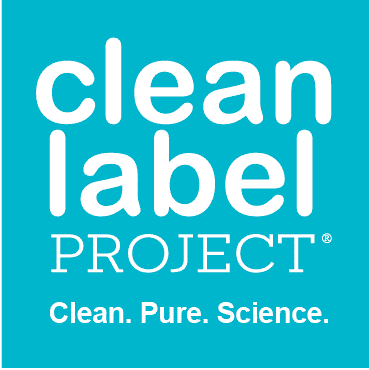TOP SELLING INFANT FORMULAS EXCEED STATE AND INTERNATIONAL SAFETY LIMITS FOR HEAVY METALS
22% of best-selling infant formulas exceed state of California limits for lead and cadmium; 14% exceed the World Health Organization tolerance for cadmium says new peer-reviewed study
DENVER, October 18, 2018 – Is the FDA doing enough to protect infants from heavy metal exposure? Research suggests maybe not.
When it comes to lead in infant formula, 14% of America’s best-selling infant formulas exceeded the World Health Organization (WHO) tolerable daily limit for a 14 pound baby (median weight of a 4-month-old female baby) and 22% exceeded State of California’s Office of Environmental Health Hazard Assessment standards for lead and cadmium, according to a study by Clean Label Project, a non-profit organization dedicated to truth and transparency in consumer products.
The findings are from Clean Label Project’s review of more than 550 formulas, baby food jars/meals, cereals and snacks, recently published in the international multi-disciplinary peer-reviewed academic journal, Science of the Total Environment (STOTEN). The research findings are also available to the public at CleanLabelProject.org.
The study suggests that for lead, pouches and jarred baby food were the items most likely to exceed the limits examined, with rice and sweet potatoes identified as common ingredients associated with increased lead concentrations. In contrast, items classified as “kids’ meals” were more likely to exceed cadmium limits, as grain-containing foods with rice, quinoa, wheat, or oats had the highest cadmium concentrations.
While the amount of heavy metals in individual servings of these products is small, no amount of lead or cadmium is good for a growing child, and the cumulative effects pose significant health hazards.
According to WHO, “Blood lead levels that were considered previously to be safe are now understood to compromise health and injure multiple organs, even in the absence of overt symptoms. The most critical consequence of low-level lead toxicity in utero and during childhood is damage to the developing brain and nervous system.”
It continued, “There appears to be no threshold level below which lead causes no injury to the developing human brain. The Joint FAO/WHO Expert committee on Food Additives reevaluated in June, 2010 and withdrew the provisional tolerable weekly intake guideline value on the grounds that it was inadequate to protect against IQ loss.”
State and Federal regulations are often at odds regarding what contaminant level is or is not acceptable. For example, the Clean Label Project research found that only 3% of baby foods tested exceeded FDA regulations for lead– but 34% showed levels above those permitted in California. In June, California pulled a toddler formula brand off shelves because its lead level exceeded State thresholds – reaching twice the lead levels found during the Flint, Michigan drinking water crisis. Under existing Federal rules, that product is still permitted to be sold in the other 49 states.
The results of the study also concluded that although organic food is beneficial for reducing exposure to toxic pesticide residue in food, it does not confer similar protection against heavy metals. This finding is particularly significant because organic food sales reached nearly $50 billion last year – and much of it was in baby foods. A 2017 survey by the Organic Trade Association states that Millennials are big buyers of organic and that becoming a parent deepens that generation’s strong affinity for organic. “Over the next ten years, we’ll see a surge of new organic eaters and consumers – the Millennial parents of tomorrow and their children,” according to a press release from the Association. A previous study by the group showed that baby food ranked as the top category for which respondents said that buying organic is extremely important. Food targeted to kids was also among the categories most important for buying organic.
“Parents automatically associate ‘organic’ with ‘healthy,’” observed Jackie Bowen, MPH, MS, executive director of the Clean Label Project. “’Certified organic’ foods do have fewer pesticides than non-organic foods, but it’s very important to be aware of other contaminants in organic foods that can be dangerous to a child’s health, such as lead and cadmium. There is clear scientific evidence to substantiate that even trace levels of lead, for example, can have lasting effects on the long-term health of developing brains.”
Items for testing were selected based on Nielson national retailer consumer-sales reports and new natural/organic brands entering the market.
To make the findings as accessible and understandable as possible, the Clean Label Project website features a 5-star rating system that names each product tested and shows how contaminated it is compared to the other products in the study. Consumers can see for themselves which products are the highest and lowest rated — there is also a report card rating each brand, based on their products as a whole.
In establishing review criteria, Clean Label Project and its medical advisory board relied on international and domestic regulations and policies, including those set by the California Office of Environmental Health Hazard Assessment.
“Every parent asks themselves the same question when shopping – what food is best for my baby?” said Bowen. As a result, “organic” often becomes the “safe” go-to. “The labeling on packaging doesn’t accurately convey the true quality and purity of the product and ingredients inside,” she continued. “Clean Label Project challenges the organic industry and the baby food industry as a whole to do better when it comes to minimizing dietary heavy metal. Consumers expect more for their children from the organic industry.”
“Infants and children have unique nutritional needs and unique vulnerabilities. Parents, brands, and government alike should take every possible precaution to assure the health and safety of this most vulnerable population. The best way to decrease exposure to any given contaminant is to strive for variety in the foods given to babies and toddlers.”
Learn more about the 2017 Baby Food and Infant Formula study conducted by Clean Label Project.
